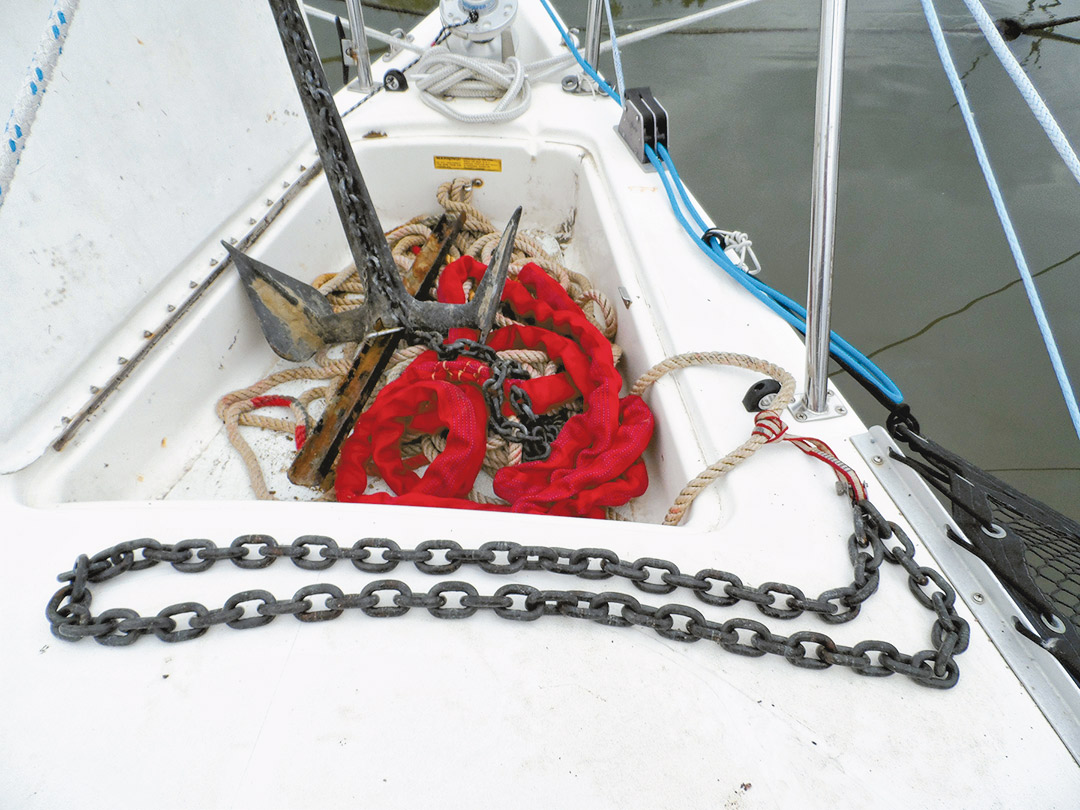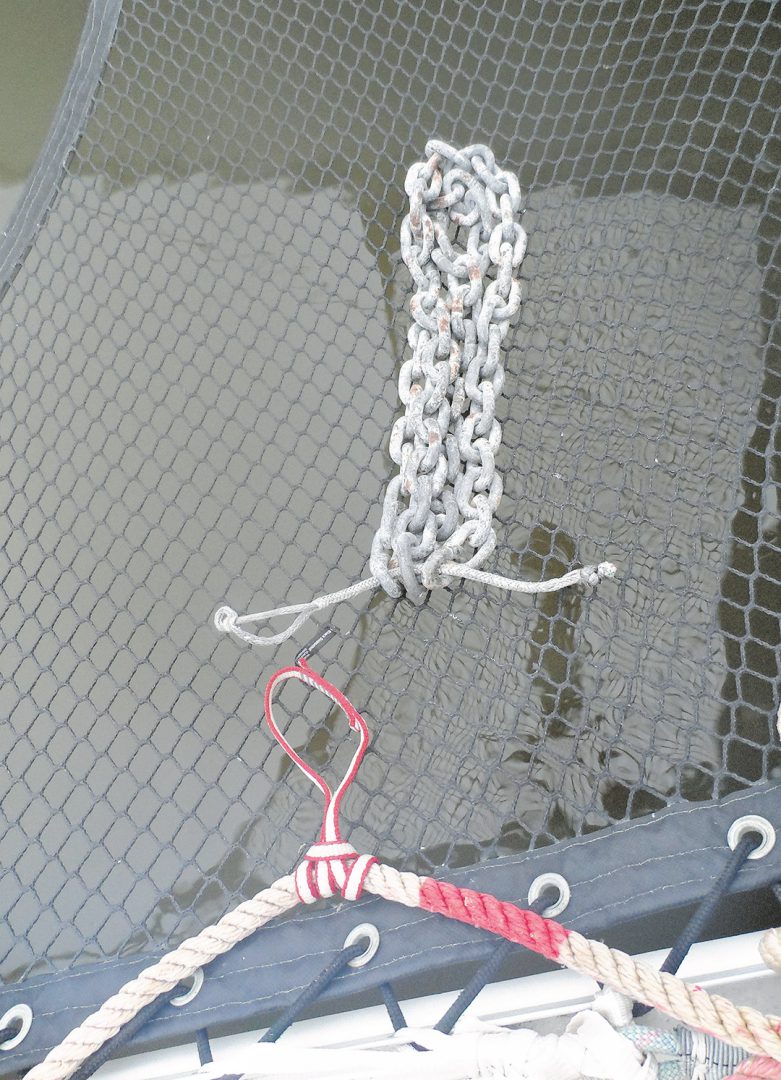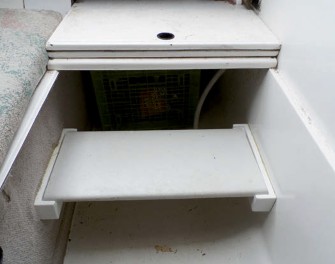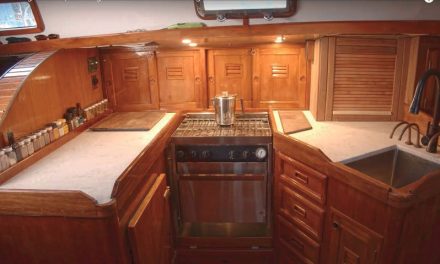Spare chain and the right placement make an easy kellet for an all-rope anchor rode.
Issue 138: May/June 2021
Small boats often use only rope for rode. This is understandable; chain is heavy, and small boats can’t carry much weight. But compared to boats that can carry and deploy chain rode, boats anchored on only rope rode tend to yaw more. They also tend to swing more freely with changes in the wind direction. They don’t move in sync with all-chain-rode neighbors in crowded anchorages. Worst of all, rope rode can drift under the boat with tidal currents, fouling the keel or rudder and potentially abrading on sharp edges.

A different version of the chain kellet, a single loop of chain. The chain kellet and Northill anchor are a workable combination for the shallow anchor well on Drew’s F-24.
The traditional solution is a kellet, a 10- to 20-pound lump of iron that can be slid down the rope rode once it’s deployed, toward the anchor. The reason for deploying a kellet is to weight the rope rode near the anchor. This serves to decrease the angle between the rode and the bottom, increasing the anchor’s holding power. The added weight also keeps the rode taut, eliminating all of the drawbacks to the all-rope rode I listed above.
But the kellet isn’t a magic bullet. It has its own drawback. Deploying a kellet can mean leaning down and forward over the bow, reaching around the forestay, and trying to attach a heavy lump of metal to the rode. It’s a great way to strain your back or knock a hole in the deck.
I’ve come up with an alternative to the traditional kellet that offers the same benefits but that I find easier to stow and deploy.

In this configuration, the chain loop is gathered using a soft shackle or lashing. It’s then secured to the rode with a sling tied in a Prusik hitch.
A loop of chain, secured to the rode with a sling and a Prusik hitch, plays easily over the bow roller with no awkward reaching around the forestay. There is nothing to ding the deck. I leave mine attached, but I can relocate it in moments if anchoring in a different depth by simply loosening the hitch, sliding the hitch along the rode, and cinching. Best of all, the cost of this kellet alternative is nearly zero for anyone with some old chain lying about.
The weight of chain should be at least half that of the anchor, though it can be more. I use 8 to 10 pounds of chain in combination with 8- to 12-pound anchors. The chain-and-sling combination should be 18 to 36 inches long, thus allowing the rope rode to float up off the bottom, reducing wear and the chance of snagging. (You never want the rope right on the bottom.)
To keep the rode low and to increase effective scope at the anchor, secure the chain kellet within 10 feet of the anchor. To reduce yawing and to swing more like boats on all-chain rode, locate the chain kellet at the midpoint between the roller and the anchor. To keep the rode away from the keel in a strong tide, secure the chain a distance from the roller equal to about 150 percent of water depth.
Give it a try; your back—and your anchorage neighbors—may thank you.
Good Old Boat Technical Editor Drew Frye draws on his training as a chemical engineer and pastimes of climbing and sailing to solve boat problems. He cruises Chesapeake Bay and the mid-Atlantic coast in his Corsair F-24 trimaran, Fast and Furry-ous, using its shoal draft to venture into less-explored waters. He is most recently author of Rigging Modern Anchors (2018, Seaworthy Publications).
Thank you to Sailrite Enterprises, Inc., for providing free access to back issues of Good Old Boat through intellectual property rights. Sailrite.com





